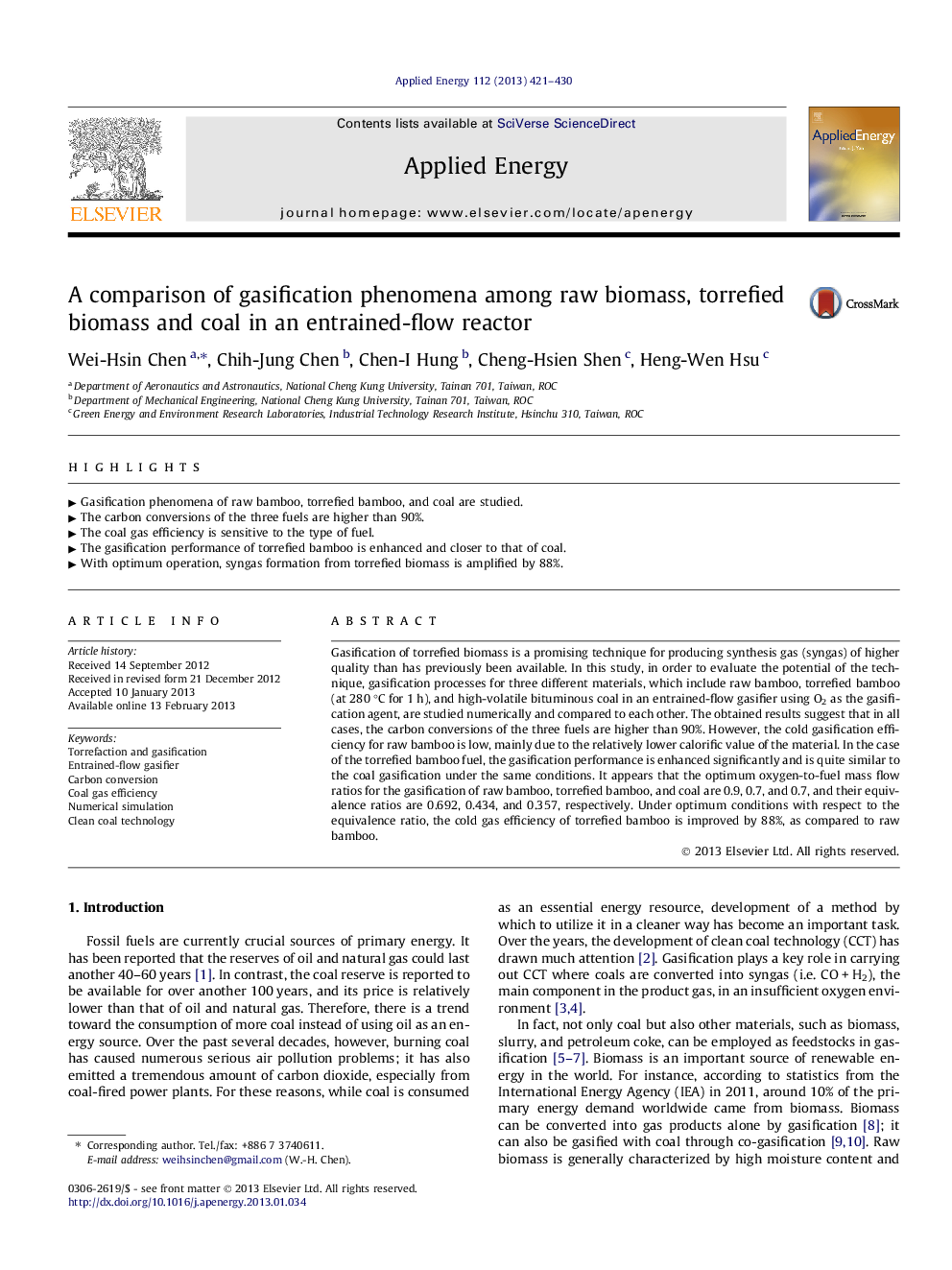| Article ID | Journal | Published Year | Pages | File Type |
|---|---|---|---|---|
| 242916 | Applied Energy | 2013 | 10 Pages |
Gasification of torrefied biomass is a promising technique for producing synthesis gas (syngas) of higher quality than has previously been available. In this study, in order to evaluate the potential of the technique, gasification processes for three different materials, which include raw bamboo, torrefied bamboo (at 280 °C for 1 h), and high-volatile bituminous coal in an entrained-flow gasifier using O2 as the gasification agent, are studied numerically and compared to each other. The obtained results suggest that in all cases, the carbon conversions of the three fuels are higher than 90%. However, the cold gasification efficiency for raw bamboo is low, mainly due to the relatively lower calorific value of the material. In the case of the torrefied bamboo fuel, the gasification performance is enhanced significantly and is quite similar to the coal gasification under the same conditions. It appears that the optimum oxygen-to-fuel mass flow ratios for the gasification of raw bamboo, torrefied bamboo, and coal are 0.9, 0.7, and 0.7, and their equivalence ratios are 0.692, 0.434, and 0.357, respectively. Under optimum conditions with respect to the equivalence ratio, the cold gas efficiency of torrefied bamboo is improved by 88%, as compared to raw bamboo.
► Gasification phenomena of raw bamboo, torrefied bamboo, and coal are studied. ► The carbon conversions of the three fuels are higher than 90%. ► The coal gas efficiency is sensitive to the type of fuel. ► The gasification performance of torrefied bamboo is enhanced and closer to that of coal. ► With optimum operation, syngas formation from torrefied biomass is amplified by 88%.
